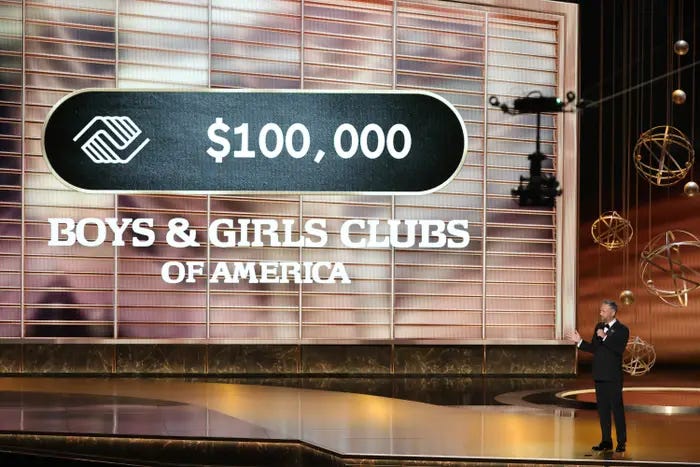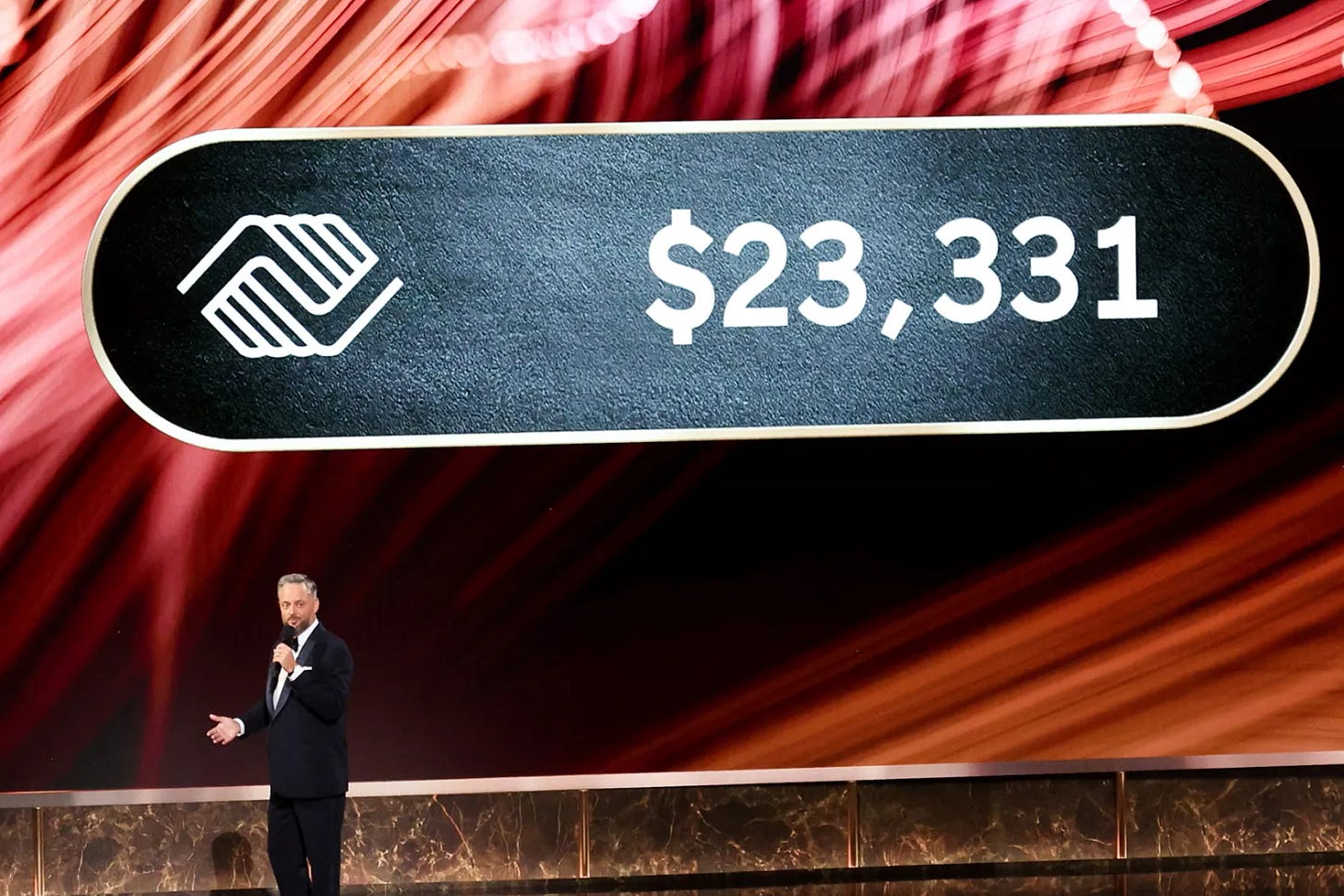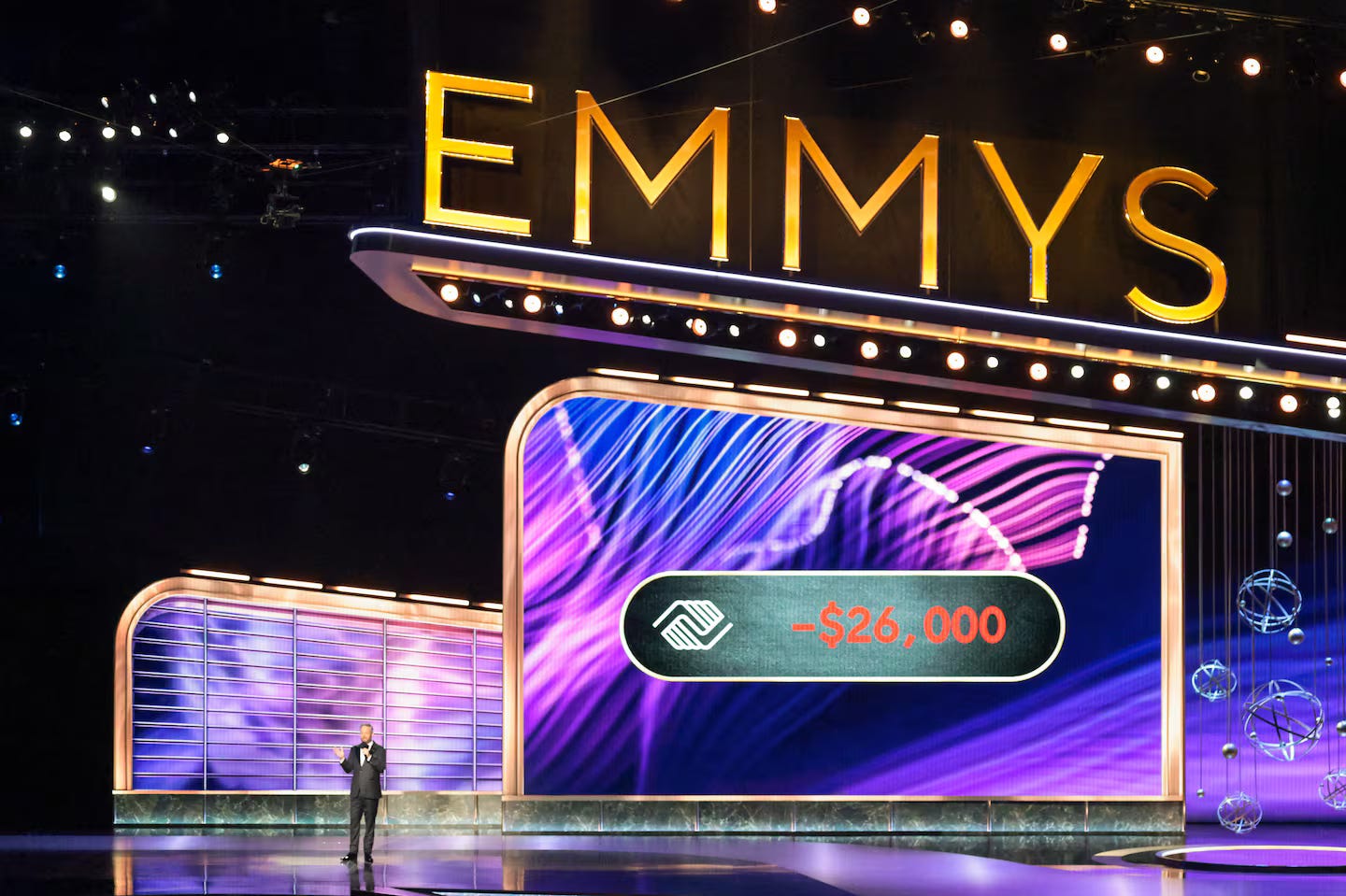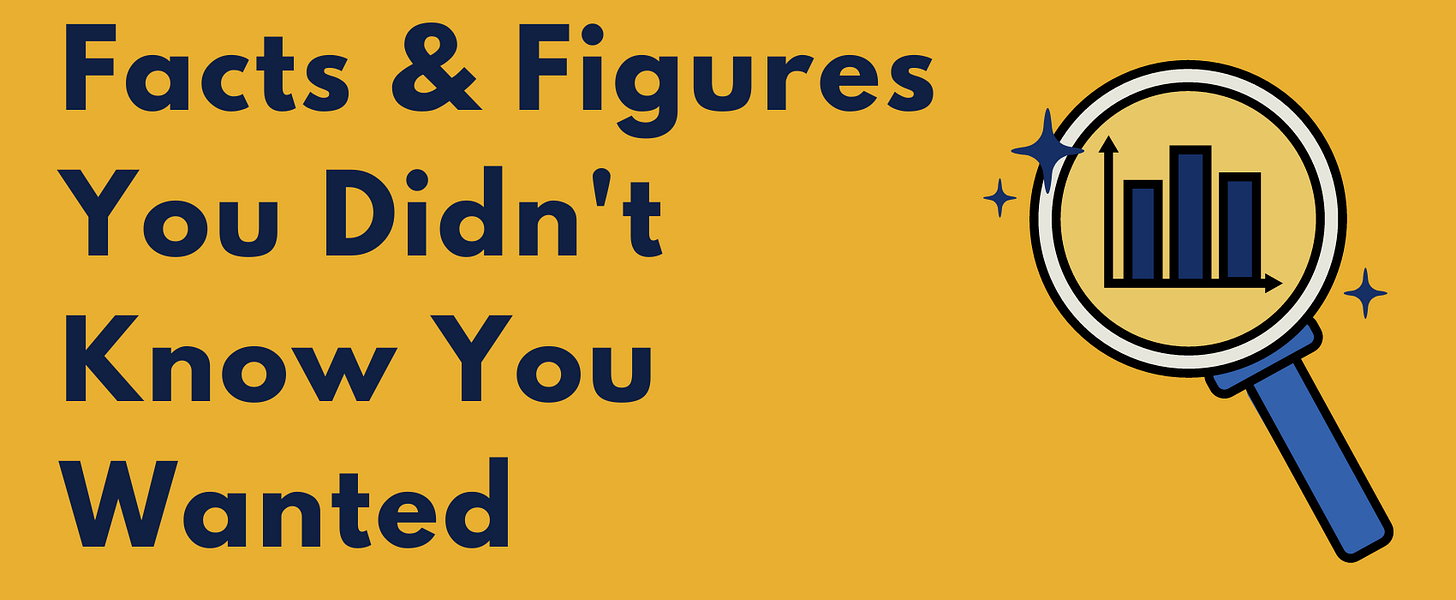When Loss Aversion Flops
Emmys host Nate Bargatze tried to use a classic behavioral economics trick to shorten speeches. Instead, the night ended with a negative balance and a lesson in why incentives need to feel real.
You’re reading Monday Morning Economist, a free weekly newsletter that explores the economics behind pop culture and current events. Each issue reaches thousands of readers who want to understand the world a little differently. If you enjoy this post, you can support the newsletter by sharing it or by becoming a paid subscriber to help it grow:
At the 77th Primetime Emmy Awards last week, host Nate Bargatze promised a $100,000 donation to the Boys & Girls Clubs of America. The catch? Every winner had 45 seconds for their acceptance speech. Every second over meant $1,000 would be shaved off the donation. Wrap it up early, and money would be added back.
The countdown ran live on screen. It was meant as a playful gimmick, but not everyone found it funny. Some commentators found it “diabolical” and “crass,” but some winners tried to play along. Hannah Einbinder joked she’d pay her own penalty, and John Oliver gave a quick speech so that he could use the extra time to mock Bargatze. But by the end of the night, the pot had dipped into the red.
Bargatze and CBS stepped in with $350,000 in total donations to save face. On paper, the charity came out ahead. But the game itself fell flat, leaving the host to clean up a mess instead of celebrating a clever experiment. The whole stunt raised an interesting question: why didn’t most of the winners seem to respond to the incentive? If incentives usually work so well, why did this one flop on live TV?
How Loss Aversion Normally Works
This incentive rested on a classic concept from behavioral economics known as loss aversion. Back in the 1970s, Amos Tversky and Daniel Kahneman showed that people react more strongly to losses than to equivalent gains. Put simply, their research showed that losing $1,000 hurts more than winning $1,000 feels good.
That asymmetry was so powerful that it led to the creation of countless nudges designed to influence behavior in small ways. For example, there are fitness apps that ask users to put down money in advance that they could lose if they skip workouts. Some utility companies have designed energy conservation programs that frame higher electricity use as a “loss” compared to your neighbors. It turns out that people will often work harder to avoid a fine than they would to earn a bonus of the same size.
Bargatze’s gimmick tried to tap into that same psychology. Every time the ticker started counting down, the winner at the microphone was supposed to feel the sting of loss. The nominees still waiting to hear their names called were supposed to take note and keep their speeches short. If loss aversion really is as powerful as economists claim, it should have worked.
Why It Didn’t Work
By the time the show was drawing to a close, the running tally had plunged to negative $60,000. So why did loss aversion fall flat at the Emmys? Sure, some speeches were shorter than 45 seconds. But some were clearly much longer. The most likely issue? Ownership.
Loss aversion works best when people feel like they’re losing something that belongs to them. This is a phenomenon called the endowment effect. Think about how much harder it is to part with a coffee mug once it’s been on your shelf for a few years, compared to that last one you thought about buying.
It’s unlikely the nominees saw Bargatze’s $100,000 donation as their own money. The odds of even winning an award that night. Without that feeling of ownership, the sting of loss never materialized. Perhaps if every nominee agreed to chip in if they won and went over the time limit, the pressure might have felt different. My friend Craig Palsson @ Market Power offered his take on the stunt, which is worth a watch (and a subscription!):
This experiment also suffered from a collective action problem. In a sense, the pot of money was a lot like a common good. Some winners “added” to it by cutting speeches short, while others “drew down” the total to take more time.
But just like the tragedy of the commons, the end result was predictable. Each winner benefited from speaking longer, and no one had a strong incentive to protect the shared pool. By the end of the night, the commons was depleted, with the total sitting at negative $60,000.
Final Thoughts
It’s also completely possible that the Emmys gimmick fell flat because it wasn’t a credible threat. The nominees in the audience likely suspected that CBS and Bargatze weren’t going to let the night end without a sizable donation. If people believe the threat isn’t real, they have no reason to change their behavior.
Loss aversion can be an effective motivator, but it works best when the losses feel real, ownership is clear, and the threat is credible. Without those conditions, people either ignore the incentive or push back against it. And when a group is involved, the challenge is even greater. Everyone shares the outcome, but no single person feels fully responsible for protecting it.
If you enjoyed this breakdown, share it with a friend who loves award shows or the one who just can’t stand the long speeches. It might give them a new way to see economics at work on Hollywood’s biggest night.
The first Emmy Awards were presented in 1949, at the Hollywood Athletic Club, and were for Los Angeles programming only. Six awards were given and tickets to the event were $5 [CNN]
The 2025 Emmy Awards drew 7.4 million viewers, marking an 8% increase from the previous year and the largest audience in four years [Axios]
The Boys and Girls Club of America received $130,183,534 in contributions in 2023 [ProPublica]
Owen Cooper became the youngest male actor (age 15) to win an Emmy for his role in Adolescence [The Hollywood Reporter]







Another consideration is that each individual case of going over time is a small contribution to the overall decrease.
"if I go over by 5 seconds, it only decreases the donation from $100,000 to $95,000."
Another factor not mentioned is that people in show business are disproportionately narcissists and sociopaths, i.e., not the greatest humans, and they're rich so a few grand is meaningless to them.
Run this experiment at a country fair or a middle school science fair, and I bet you'd get a lot of speeches that would make Calvin Coolidge seem loquacious.